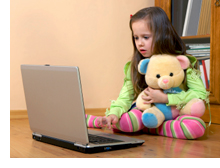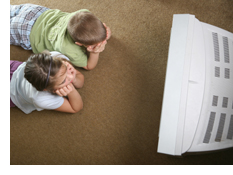Wednesday, May 6th, 2009
[The following is an article I wrote for Playthings Magazine which appears in the May 2009 issue.]

When toy companies talk about new toy products, there’s often a lot of discussion around a toy’s play patterns. What is it about the toy that resonates with a child? What play patterns will the toy tap into? Will the play pattern extend across age and gender differences?
Sometimes answering play pattern questions like these are pretty straight forward, other times their answers are not as clear cut. Potentially even more complicated is describing the play pattern around a toy product tied to a virtual world or online experience. What kind of play pattern are we talking about now? How does the play experience through an avatar in an online world differ from that of a child playing with a physical toy in the real world?
These are hard questions to answer, but they are ones I’m betting more and more people will be asking in the world of youth marketing.
The 2008 American International Toy Fair was a big year for virtual world toy products. Unlike years before, 2008 saw many virtual world product announcements, a first for the show. Some of the biggest announcements came from the likes of Disney and Techno Source with Pixie Hallow and Clickables, iToys with the Me2 Universe, Ty with Beanie Babies 2.0 and TyGirls, and 10Vox with Tracksters and KooKeys. Each of these companies offered a virtual play experience through the purchase of a tangible toy product—the business model of preference being one in which the consumer buys a tangible product that grants access to an online world.
Fast forward to 2009. It seems almost every few days we learn of a new virtual world for kids. While a number of virtual worlds were announced on the show floor during the 2009 Toy Fair, even more were announced outside of the walls of the Javits Center. What was surprising was the number of new product announcements, not just updates to old products launched a year or two prior. Take note for the future: February could very well become the product announcement month of choice in the virtual world space. Such announcements started in 2008 and today appear to be picking up steam.
As you can imagine, any announcement attached to a toy industry event will include some tangible toy product as part of the virtual world offering. Most often plush toys are the vehicle of choice for promoting virtual worlds to kids, but changes are underway within the toy-related niche of the virtual world space. Just about anything these days can include a password key on a piece of paper to allow access to an online destination. Also added to the mix are new solutions that include USB thumb drives that plug into your computer and become the keys to playing in these online destinations.
When I look back on the last two years of tangible toy/virtual world product announcements, I notice two trends, in particular, related to the software portion of the announcement:
- At the time when a company first makes a virtual world announcement, the virtual world is generally far from completion. If the virtual world has been in development for a long time and is in the process of a sizable public beta effort (meaning many actual consumers are testing the virtual world to flush out problems and improve the quality and stability of the product), this is a good thing. A sizable public testing effort should be the norm with all such products, but sadly it is not. As a result, first-year launches can be challenging for both the companies that make the products as well as the children who use them, typically resulting in poor reviews out of the gate.
- After a product has officially launched, it tends to be improved and expanded upon as sales grow or as web traffic proves what is working and what is not within the virtual world. These sorts of improvements are generally seen with products that have been in the marketplace for at least two years.
As it relates to the overall offering of both the physical and virtual parts of the product, I have these additional observations related to the buying and selling of these items that can lead to consumer success:
- How “giftable†is the product? For example, one of the things I love about Webkinz is that the current line of plush toys makes for a great gift idea. They are priced right and are easy to give. Also, the cost to get online is attached to the purchase of the tangible item. This removes the burden from a child of figuring out how they may have to pay for the online experience.
- Related to cost, are there any hidden fees to gain access to the online world? Sometimes the purchase of the tangible product will not allow full access online. Some virtual worlds can be tiered or gated in a way that premium content is restricted until a credit card is used. A number of different financial models exist related the sale of such products. Be sure to ask if the purchase of the tangible good is the only fee involved or if other fees are part of the online experience.
- What kind of tangible toy selection is possible? Are there only a small number of items at one specific cost or are many SKUs available across a variety of price points? A variety of products and pricing options can be of benefit to sales.
- Is there more to the virtual world than just game play? Few of the latest virtual world announcements offer an experience beyond games. Two products to watch that offer something more include Jacabee’s The Jacabee Code, which promotes a unique approach to learning history and Tales 4 Tomorrow, a destination that is all about animal conservation (with plush toys from Fiesta).
- How deep is the online experience? How many activities and how much content is available? What is the mix of games to creativity tools? Newer sites may not have as much depth as sites that have been on the market for some time.
- Who does the product appeal to, boys or girls? Historically, very few of these virtual world offerings have had an appeal to boys 9 years old and older. However, this too is changing. New destinations with a greater appeal to boys include products like the car-centric Tracksters, Revnjenz (Revnjenz) and KizMoto (KizToys); and the dinosaur-themed Webosaurs (Reel FX) and Xtractaurs (Mattel).
- What about younger users? While it may be surprising to find even younger users interested in similar online destinations, many of the social and communication tools available to older users are just not of interest to younger users. Age-appropriate products for young users have been in short supply. However, Ganz recently announced a younger version of Webkinz called Webkinz Jr., and since 2007, Gigapals has offered an eponymously-named site with related toys for the same audience: ages 3 to 6. When thinking up products for younger children, consider the amount of reading and audio instruction provided within these worlds. This demographic may be computer savvy enough to get to your site, but they may still be challenged by the inclusion of too much text once they arrive there.
- If the online world allows its users the ability to communicate with one another, is the method of communication “canned chat, †“filtered chat†or “open chat� In addition, what kind of monitoring is provided to prevent inappropriate conversation or cyber bullying?
It’s hard to easily describe the appeal of online worlds for kids. An answer may be found with the sense of independence or a feeling of being in complete control over the digital universe. There might also be an aspirational component to these worlds, as well, that is hard for an adult to fully understand. Part of this new play experience may be an extension of pretend play we’re all so familiar with, related to kids and toys in the real world. One thing is certain, virtual worlds are an expanding part of a child’s play options, however you choose to define the play pattern. And because new virtual worlds are being announced more frequently, chances are there’s one that’s a perfect fit for any girl or boy, or maybe even the child at heart.



 When I first became aware of Peggy Charren, I had been creating children’s media for only a short time. What I learned in those days was that Peggy founded a child advocacy group in 1968 called
When I first became aware of Peggy Charren, I had been creating children’s media for only a short time. What I learned in those days was that Peggy founded a child advocacy group in 1968 called  This past week I was at Northwestern University to participate in a conference called
This past week I was at Northwestern University to participate in a conference called